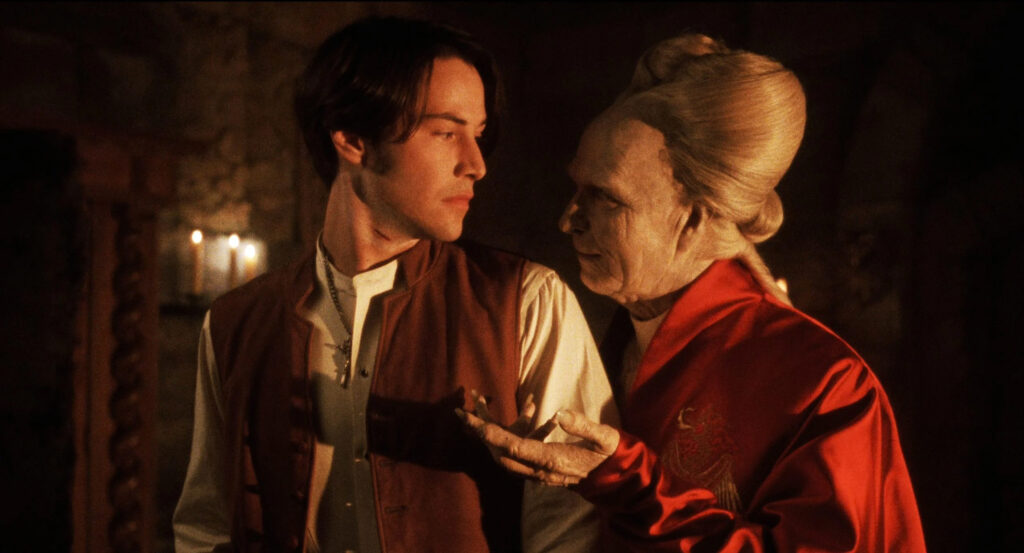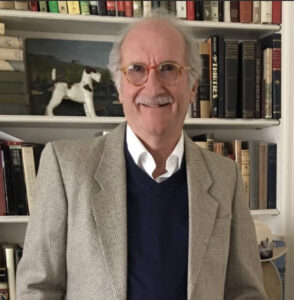
I recently spoke at a screening of the classic 1922 vampire film “Nosferatu.” It was a fund raiser for the St. Genevieve County Library. I was, in the words of the library director, “to provide an educational component that highlighted the importance and relevance of this ‘granddaddy’ of all horror films.”
I’d planned this trip to the charming French-accented river town as a romantic getaway with my wife. As the night got closer I began feeling guilty. I should’ve told the library guy that I’m not a film scholar, nor a theorist, nor a critical studies PhD. I’m a screenwriter. I teach the craft of dialogue. Now here I was, the purported expert, speaking about a silent film
But then I realized that I’m the perfect guy to talk about vampires. I’m an eyewitness.

As a young man, I too, was summoned to Dracula’s castle. Only it wasn’t in Transylvania. It was on Stage 24 of the Warner Brothers lot. And the terrifying character I was to meet wasn’t the Count. It was Francis Ford Coppola, then directing “Bram Stoker’s Dracula,” the 1992 adaptation starring Gary Oldman, Anthony Hopkins, Winona Rider and an up-and-coming Keanu Reeves, fresh from the success of “Bill and Ted’s Excellent Adventure.”
Turns out I’d get my own adventure. Coppola wanted to talk about a screenplay. I was nervous about meeting between set-ups on his $90 million epic but he was warm and friendly. “Call me Francis and don’t worry, we’re just about lit,” he said. “It’s a simple stunt anyway.”
Over Coppola’s shoulder I spotted three stuntmen strapping Keanu into a catapult. The contraption would slingshot him across the stage and into heavy padding. New to doing his own stunts, Keanu looked slightly apprehensive. Or perhaps scared witless.
I found this worrisome but Francis was now hyper-focused on my script. Of course his thoughts were brilliant. We began riffing.
As we discussed a new third act twist, Coppolo’s assistant director interrupted to say that they were just two minutes away from – “HEY!,” Francis barked. “THIS,” indicating me, “is IMPORTANT.” The A.D. backed off. My eyes followed him to a nervous-looking Keanu but Francis was on a roll. I tried to keep up…
… just as I’d hoped my library audience could keep up with the densely packed “Nosferatu” scholarship my WashU film colleagues had coached me on the day before. Director F.W. Murnau broke new ground in the horror genre. He used shadows, lighting and spooky locations full of magic and mysticism. Astral entities arose from dark alchemical ritual. And some other stuff that sounded an awful lot like throwing a guy across the room.
Keanu was now sweating through his makeup. The cinematographer was concerned. None of this seemed to bother Coppola, who still had thoughts about my script and who was damn sure going to finish them. I embraced his notes quickly, more for Keanu’s sake than my own.
Like Keanu, my “Nosferatu” audience was getting restless. Fun facts! Murnau, the director, died in a Santa Barbara car crash in 1931! His grave was robbed in 2015! His skull disappeared, never to be recovered!
More fun facts! Murnau and his producing partner, occultist Albin Grau, were both World War One vets! Both had PTSD! Grau saw the horrors of trench warfare and Murnau flew alongside the fabled Red Barron, surviving eight nearly fatal crashes! One of my colleagues told me that the original idea for “Nosferatu” came to Grau after meeting a Serbian farmer who said his father was a vampire!
Unlike the count, my audience wasn’t biting. I wrapped it up.
Back on Stage 24, Coppola also sensed it was go-time. With a smile and a “we’ll talk later” handshake, he twirled to face his crew. “Okay, let’s launch Mr. Reeves.” I slunk out the stage door. The warning bell rang. The slate clapped but I was gone before action was called.
Coppola’s “Dracula” wasn’t his best film, but it outshines most of the hundreds of other versions, in all forms of media, that have followed Stoker’s original novel. And after all these years of teaching, I must confess, some of the scholarship has rubbed off on me.
Academia is now in my blood. After the talk in St. Genevieve, I reported back to my colleagues. Was that a fiendish gleam I detected in their eyes? Was there a hint of fang in those knowing smiles?
I excused myself and ran to the nearest mirror. I wanted to inspect my neck.
Richard Chapman is a senior lecturer in Film and Media Studies in Arts & Sciences at Washington University in St. Louis. He has written more than 200 hours of network television as well as the Emmy-nominated HBO film “Live From Baghdad” (2002) and the documentary “Dateline-Saigon” (2020).